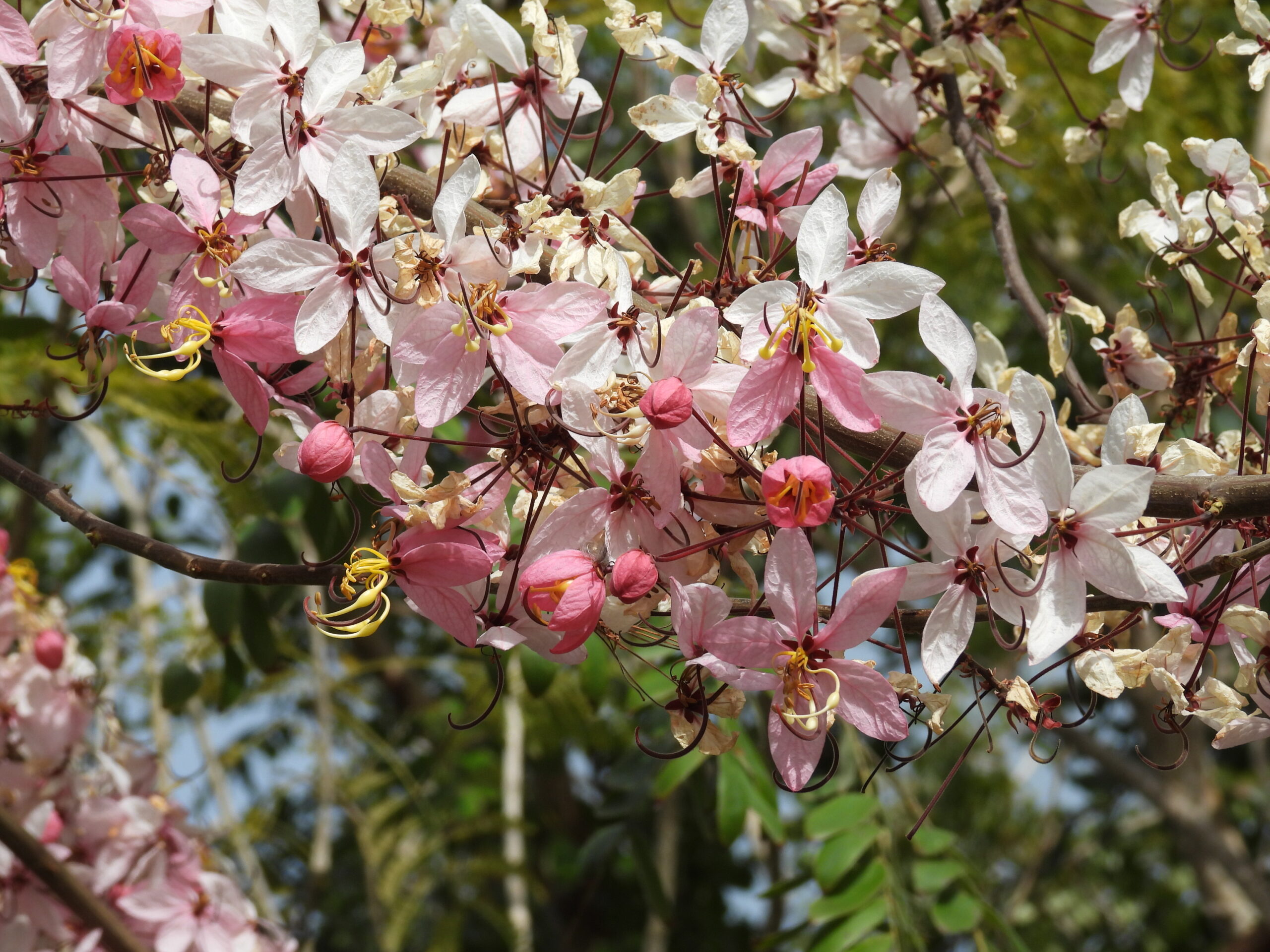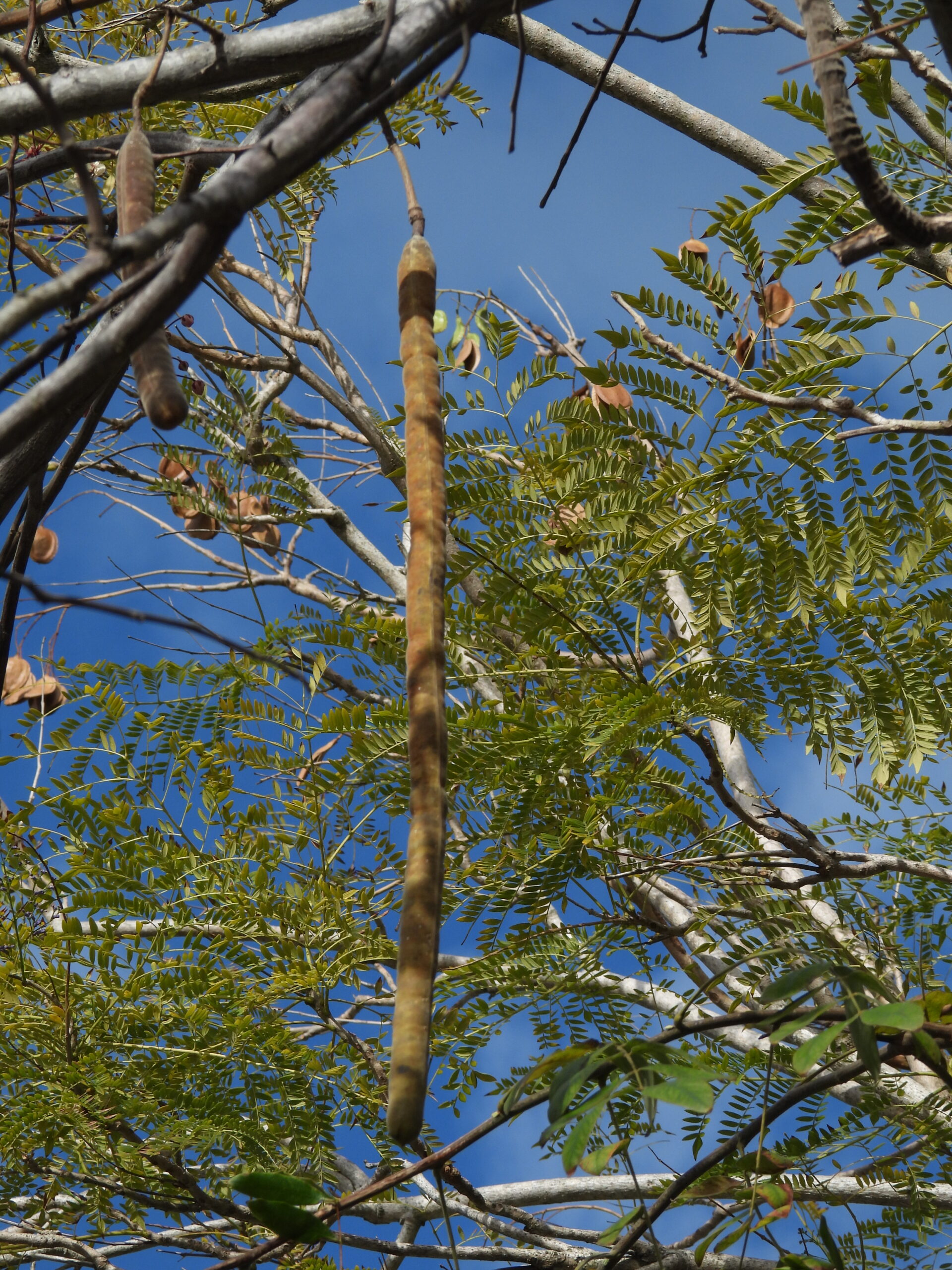Habit: Cassia javanica grows as a winter deciduous tree up to 15 m in height. The bipinnately compound leaves are arranged alternately. The petioles have a slightly swollen pulvinus. The leaflets are in 5v- 15 pairs. Each leaflet to 3 cm in length, elliptic to oval, with a round to acute leaf apex, with an entire margin.
The complete, perfect, zygomorphic flowers are arranged in axillary racemes. The calyx has 5 greenish, unfused, oblong sepals. The corolla has 5 pink fading to white with age, unfused petals, none of which form a keel. There are 10 stamens (3 long and fertile, 4 short and fertile and 3 sterile). The ovary is superior and forms an elongate, pendulous, many-seeded dark brown legume at maturity up to 60 cm in length and 3 cm in width.
Habitat: Cassia javanica grows in Human Altered environments (yards and gardens). Distribution: Cassia javanica is NOT native to the Lucayan Archipelago but does occur on many of the island groupings. It is native to Southeast Asia but is grown around the world in tropical and subtropical areas.
Medicinal/Cultural/Economic usage: Cassia javanica is not known to be used in the Lucayan Archipelago.
It is grown as an ornamental for its showy flowers and interesting dangling fruits.


